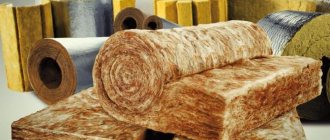Photo: ShutterStock/Fotodom.ru
Household polyurethane foams with an applicator tube: Foam Premium (Penosil) summer (750 ml pack - 262 rubles). Photo: Penosil
Polyurethane foam is an indispensable element of many construction works. It is used when installing windows and doors, filling various openings and openings, for connecting and sealing frame construction structures, fixing wall panels and roofing slates. Among the main manufacturers of these products are Henkel (Makroflex trademark), Bison International, Den Braven, Penosil, Profflex (Profflex, Storm Gun trademarks), Soudal, Selena (Tytan Professional trademark). The price of a cylinder with polyurethane foam depends on its volume, weight, popularity of the brand and ranges from 100 to 600 rubles. It is worth noting that polyurethane foams are divided into one- and two-component ones. Since most of the foams presented on our market are single-component, let’s talk about them.
The consequence of poor sealing is distortions, sagging, and reduced service life of windows. Correct use of foam provides the necessary heat and sound insulation. Photo: ShutterStock/Fotodom.ru
What is polyurethane foam?
Maxi (Profflex) all-season (750 ml pack - 218 RUR). Photo: Profflex
One-component polyurethane foam is a polyurethane sealant in an aerosol package. The basis of the foam is a prepolymer (prepolymer) synthesized from a polyol and isocyanate. As a result of the polymerization reaction, partly occurring inside the cylinder, and mainly in the air, after release outside, these substances form polyurethane. Coming out of the container, the prepolymer sharply increases in volume (20–40 times) and turns into foam. Expanding, it penetrates into hard-to-reach cavities and fills voids. Then the cellular mass gradually polymerizes (hardens), absorbing moisture from the air or from a previously wetted surface. After a day, it becomes a chemically stable substance - polyurethane. It is non-toxic, does not deteriorate for a long time, and is resistant to moisture. This rather rigid, finely porous material consists of closed cells and serves as a good insulator.
Peculiarities
Cured polyurethane foam is an elastic, solid material of a yellowish-white color. This very light substance has excellent heat and sound insulation properties. It very quickly loses its properties under the influence of ultraviolet radiation, so it is used mainly indoors.
This type of foam has a number of advantages that make it stand out from other materials:
- increased moisture resistance, high levels of sound and heat insulation;
- low current conductivity, which allows it to be used when installing electrical networks;
- many types of foam are resistant to fire, which allows expanding the scope of its application;
- after leaving the cylinder, such foam expands in volume and fills even those microcracks into which it is impossible to insert the gun tube;
- polyurethane can be used to glue surfaces made of different materials, for example, wood or brick;
- The foam is absolutely non-toxic and resistant to chemical attack.
Almost all of the above properties must be indicated by the manufacturer in the appropriate certificates, which can be requested from the seller.
The packaging itself must contain the following information:
- foam expansion volume. It can range from 10 to 300%, but most often the actual foam is still slightly less, since this percentage is indicated for ideal conditions;
- its viscosity;
- the volume of the container itself.
Most often, all these characteristics depend on the type and purpose of the foam, so you need to know which polyurethane it is and what it should be used for.
How is household foam different from professional foam?
Tytan Professional STD (Selena) summer (750 ml pack - 315 RUR). Photo: Selena
The container with household foam is equipped with a special applicator tube. Thanks to this device, no additional tools are required to release the viscous mixture. Household foams are generally single-use products. The yield of the mass is difficult to dose, and it itself is characterized by high density and low polymerization rate. Professional foams are designed for repeated use and better sealing. In them, the supply and dosing of the foam jet occurs using a plunger gun. It is screwed onto a special ring on the cylinder. It is professional foam that should be given preference when installing doors and windows.
Device design
Let's take a brief look at how this tool works and what it consists of. It is worth noting that its configuration is very simple. Despite the huge number of models on the modern market, they are all very similar to each other.
Let's look at the main elements of the device:
- A tube. This part has two tips, which are also called nozzles. The tube and nozzles have different diameters, due to which the foam is supplied under high pressure.
- Trunk. You can’t do without it when working with deep holes. Its length can be 20 centimeters. There are two types of element design - collapsible and solid. The first option is much more convenient to clean after use.
- Adapter (aka gearbox). The part connects the container with consumables to the mounting gun.
During use, it is this element that bears the heaviest load.
- Adjustment bolt. Judging by the name, it’s easy to guess that the required foam flow rate and volume are selected using a screw. A very useful part when performing large repair work.
- Fasteners This part is responsible for placing and securing the can inside the gun. Outwardly it resembles an ordinary nut.
- Adjustment lever. This mechanism is designed to control the speed of output of the consumable resource, which depends on the force of pressing.
- Handle. The central element of the support, acting as a clamp for the remaining elements. For its manufacture, metal or heavy-duty plastic is used. In order to increase the convenience of users, special grooves are applied to it for the fingers.
Using the instructions for the device, even a beginner can work with the tool.
At what temperature can foam be used?
Soft foam cleaners: PU Foam Cleaner Click (Soudal) (500 ml pack - 257 RUR). Photo: Soudal
Depending on the operating temperature range, polyurethane foams are divided into summer, winter, and all-season. For the former, the range of permissible temperatures is in the positive zone: from 5 to 30 ˚C. Winter and all-season foams are used in a wider range: from –10 °C (some from –25 °C) to 30 °C. In this case, it is worth considering the manufacturer’s advice on the temperature of the cylinder. In the cold season, with low air humidity, the course of chemical reactions slows down, the viscosity of the mixture increases, and the pressure in the cells of the foam mass decreases. For normal operation of winter foam, many manufacturers advise warming the balloon to room temperature (23 °C), keeping it in a living room for about a day or immersing it in warm water (about 30 °C). However, there are products for which the use of a cold cylinder is acceptable.
Winter foams contain components that help better absorb moisture from the environment and maintain the desired consistency at low temperatures. Winter foams can be used in cold and warm seasons without compromising their performance properties. Photo: ShutterStock/Fotodom.ru
Release form
All types of polyurethane insulation differ according to several criteria.
Depending on the method of application and form of release, they can be of two types.
- Professional foam is produced in special cylinders, which are inserted into a plastic gun with metal clamps. This gun allows you to use polyurethane economically and in equal portions. The main thing is to thoroughly rinse the device after use so that any remaining substances in it do not harden.
- Instead of a gun, household foam packages are equipped with a small tube that is placed on the lever. It is not suitable for large repairs, but it will cope perfectly with minor defects.
Depending on what time of year and at what temperature the polyurethane will expand and harden, the following types of polyurethane foam are distinguished:
- summer – used at temperatures from +5 to +35 degrees;
- winter – used at temperatures from -18 to +35 degrees;
- universal - costs much more, but can be used all year round.
It is worth noting that the temperature ranges are indicated not for air, but for the surface on which the composition will be applied. The lower its temperature, the less expansion of the finished layer will be.
In addition, foam can vary in type depending on the flammability class:
- B3 – flammable substance;
- B2 – self-extinguishing substance;
- B1 – fire-resistant compounds.
Finally, polyurethane foams vary in composition. They can be one- or two-component. However, the latter type of foam is so difficult to handle that it is practically not used for private construction and when renovating premises with your own hands. Two-component foam hardens in a quarter of an hour and there is practically no time left to eliminate defects, so only experienced professional builders use it.
Why do you need to shake a can of polyurethane foam before work?
ECO Tytan Professional (Selena) (500 ml pack - 235 RUR). Photo: Selena
A container of polyurethane foam contains several components of different densities. If stored immobile for a long time, they can become distributed in layers. Therefore, before starting the process, the container should be shaken vigorously for half a minute to mix the components. Also, shake it periodically during use and especially after smoking breaks. Insufficient shaking can lead to the formation of a coarse foam structure and reduced volume. During operation, the cylinder is held upside down. In this position, the propellant gas drops below the polymer mass and ensures maximum use of the contents.
The surfaces on which polyurethane foam is applied must be thoroughly dust-free and free of dirt, oils, grease and ice. Photo: ShutterStock/Fotodom.ru
Polyurethane foam sealant: a little practice
So, we have learned a lot about polyurethane foam sealant. It's time to figure out how to use it without a gun.
Step-by-step instruction
I’ll be honest: it’s difficult to work with foam without a gun, but it’s possible, since the household version has a special tube. So, let's start operation "X".
The process consists of the following steps:
- gloves are put on (the best option);
- the surface for work is prepared: it is cleaned of dirt and dust;
- if necessary (if the gaps are too wide or deep) they are sealed with pieces of foam plastic or its analogues;
- shake the container (1 minute) so that the foam has a uniform consistency and intensive release from the container;
- Using an ordinary household sprayer, lightly moisten the foaming area with water - (liquid should not flow or drip);
- remove the cap from the cylinder;
- put a special tube, which comes with the kit, onto the protrusion valve;
- the edge of the tube is brought to the area that needs to be filled with foam, and the valve is pressed (the seam being processed is half filled);
- important point: the working position of the cylinder is bottom up;
- after 30 minutes, the treated area is checked, if there are any “jambs” left, foam is added;
- after a day (but it can be done much earlier), the frozen excess polyurethane foam is cut off with a sharp stationery knife;
- finishing work must be carried out, since the foam is “afraid” of ultraviolet radiation (sunlight) - this is plaster, painting or other cladding.
Difficult? Difficult? No. There is absolutely nothing to be afraid of, but there is no need to relax either...
How much foam is needed to fill cavities?
Cleaner for hard foam: Tytan Professional (Selena) (100 ml pack - 379 RUR). Photo: Selena
In order to prevent deformation of insufficiently strong walls during the expansion of the foam mass, it is recommended to fill no more than a third of the voids and cracks with foam. When installing interior doors, it is advisable to use several spacers to secure the frame. Then the foam increasing in volume will not be able to deform it. However, with the correct professional dosage of foam, this is not necessary.
The volume of finished foam depends on the capacity of the cylinder and its filling, the temperature of the air and the cylinder, air humidity, the quality of the gun and the qualifications of the craftsman. High-performance foams produce 65 liters or more, while regular foams produce 25–45 liters.
The working process
Charger
Each can has a protective cap for sealed storage of consumables. Before you start using it, you need to remove it and insert the cylinder inside the device holder. Remember the basic rule - during operation it is necessary to keep the container upside down (that is, the holder must be at the bottom, like the handle, and the adapter must be at the top).
Installing the container into the gun design is not difficult. During the screwing process, it is necessary to hold the tool with one hand and install the cylinder with the other using gradual rotational movements.
To ensure that the composition becomes homogeneous, the vessel must be shaken. It is advisable to do this in the standard position (handle on top).
About 15-20 shakes are necessary.
Foam application
Before applying foam to a specific area, you need to wet it. Moisture is necessary for swelling, so that this process occurs faster and more efficiently.
The tip is directed towards the seam. Press the trigger carefully and accurately, without sudden movements or jerks. In this case, the possibility of trigger breakage will be minimal, and the quality of the foam at the exit will be higher. The hole is filled completely with material. While working, move the nozzle from side to side in a zigzag shape.
Use the adjustment screw to change the amount of foam that is supplied to the barrel. The volume depends on the size and depth of the seam.
To ensure that the composition does not lose homogeneity, do not forget to shake it from time to time.
How to replace the cylinder?
Changing a foam container is a simple process that does not require special knowledge, training, preliminary preparation or other manipulations. Sooner or later the foam runs out and you have to replace the empty container with a full cylinder. The replacement procedure is carried out as follows:
- The barrel of the device must be directed into a bucket or other deep container.
- To get rid of the remaining consumables, you should press the trigger and wait until the remaining foam comes out.
- Next, the device is turned over so that the handle is on top, and the empty container is simply unscrewed.
- Using a special liquid compound, you should thoroughly clean the mounting area and install a new vessel. The device is now recharged and can be used again.
Read also: DIY 12V voltage stabilizer for cars
Completion of work
As soon as the repair work has come to an end, the adjusting screw should be tightly closed to block the access of oxygen to the foam as much as possible. If there is still foam in the container, and the next use is planned for the near future, then there is no need to remove the incomplete container. On the contrary, experts recommend leaving it inside the instrument. In this case, the foam will not dry out due to being under constant pressure.
Before finishing using the product, treat the tip of the nozzle with a special liquid. This procedure will prevent the consumable resource from drying out. Subsequent use will be much easier and more comfortable, without mandatory cleaning before use. If the old bottle is empty and there is no new one at hand, you need to remove the bottle, thoroughly clean the construction gun and leave it in storage until the next use.
Should surfaces be dampened before applying foam?
Relative air humidity of more than 50% is sufficient for the normal process of foam polymerization. In such conditions there is no need to moisten the surfaces. However, with low humidity (less than 50%), which is typical during the cold season and hot summer days, moistening the seams and cavities will increase adhesion and improve the curing of the foam. This should be done without fanaticism, so that there are no drops on the surface and no water accumulates, otherwise its excess will prevent the foam from connecting to the surface.
The construction gun must be cleared of foam immediately after removing the empty cylinder, preventing the mass from hardening inside the gun. Photo: ShutterStock/Fotodom.ru
Making a gun with your own hands
You can make a gun for polyurethane foam from a pneumatic spray gun and a broken gun . They are combined and a well-functioning device is obtained. Here's a little instruction on how to make a foam gun:
- The essence of connecting these structures is to replace the paint tank of the pneumatic spray gun. Instead, a bottle of sealant is screwed on. To do this, first attach the connector for the cylinder, removed from the broken foam gun.
- But the threads of the connections do not match, so to fix and secure the connection you should use epoxy glue , having first cleaned both threads.
- To ensure that the glue fills the threads and does not fall into the required holes, they are first plugged with hot glue. When the necessary holes are plugged, you can design further.
- Epoxy glue is diluted according to the instructions: 10 parts of resin per part of the hardener. A regular 10 ml syringe is filled with 10 ml of heated resin, and then 1 ml of hardener. Mix everything thoroughly, heating as needed. First, the resulting glue is applied to the threads of the connector so that there are no empty spaces left.
- The body of the spray gun is securely installed, and the connector is glued . All is ready.
- The final step in how to make a foam gun is to heat the joint to a temperature so that the hot-melt adhesive that plugs the holes melts and flows out.
When can you cut off excess foam?
The polymerization time of polyurethane foam is affected by the temperature of the environment, the cylinder itself and the size of the cavity. On average, professional foam hardens in a cavity 30 mm wide in 20–30 minutes, while household foam hardens somewhat more slowly—in 40–60 minutes. The expansion process is completed in a day, and then you can begin to remove the solid mass.
Vertical gaps are filled with polyurethane foam, moving from bottom to top. Photo: ShutterStock/Fotodom.ru
The hardened foam is carefully cut off with a sharp knife. Photo: ShutterStock/Fotodom.ru
- Construction Materials
How and with what to wash polyurethane foam from hands and clothes: a complete review of means and methods
Foam cleaners
Winter professional mounting foams: Makroflex Premium Mega 70 (Henkel) (870 ml pack - 390 RUR). Photo: Henkel
The polyurethane foam remaining after mechanical cleaning of the gun, cylinder (valve and the outside of the cylinder itself), clothing and other surfaces can be easily removed using a special aerosol cleaner. There are two types of cleaners available:
- for soft foam;
- for hardened foam.
They all contain strong solvents. Therefore, before use, it is advisable to test the effect of the aerosol on a hidden area of the surface being cleaned.
Procedure for changing a used cylinder
When performing large volumes of work, naturally, it will be necessary to replace the used empty cylinder with a new container. This action has its own order:
- Even if the nozzle has stopped delivering mixture, the container may still contain some residual pressure. Before replacing the cylinder, you must bleed it by pointing the barrel into construction debris and pulling the trigger. After the hissing sound has completely stopped, the instrument is placed with the handle up and the empty container is unscrewed.
- The connection point, that is, the adapter, will be covered with excess foam. They must be immediately washed off with a washing solution and a new cylinder quickly screwed on. Delaying these actions will lead to solidification of the remaining mixture in the barrel. Then for further work you will have to completely clean the entire tool.
Having made a quick change of container according to all the rules, you can begin further work with the tool.
When replacing the cylinder, you must quickly wash off any remaining foam from the adapter and do not let it harden.
How to store and reuse a foam canister?
Soudafoam Maxi 70 (Soudal) (pack 870 ml - 336 RUR). Photo: Soudal
You can interrupt work with household polyurethane foam, the container of which is equipped with an applicator tube, only for a short time, no more than half an hour. The mixture dries quickly in air and can block the exit of the remaining foam. When using professional foam, manufacturers recommend not removing the gun from the cylinder until all the contents are empty. During storage, the trigger mechanism of the pistol is blocked with a metering screw.
In this condition, the cylinder with the gun can be kept for 1–2 weeks. But its prolonged exposure to warm and humid conditions significantly reduces the shelf life of polyurethane foam. But a dry and cool room is ideal for storing the cylinder. Moreover, they install it vertically, with the valve up, since a horizontal position leads to valve malfunction.
Recommendations for use
In order to avoid any problems during both minor and major repairs of your own house or apartment, you need to be able to use both professional and household foam. To work correctly with the first one, you must correctly install and use a special construction gun.
Gun installation includes the following steps:
- To begin, the foam balloon is heated in warm water to room temperature, after which it is shaken vigorously for 30 seconds. This will give the polyurethane a homogeneous state, which will allow it to come out of the cylinder smoothly and in full;
- The protective cap is removed from the upper tank of the gun, it is turned with the handle down and the cylinder is screwed into it. The container is screwed in with force until a hissing sound appears, which means that the mixture has begun to flow into the tool;
- if the gun has been previously used and has not been thoroughly washed, then the hissing will not be heard and you will have to purchase a new tool;
- The system of connected elements is shaken vigorously several more times, the adjustment screw is turned a quarter turn and, holding the trigger, they begin to apply.
Working with such equipment does not require specific skills, but it will require considerable dexterity if this is the first time.
Applying foam from a gun is performed as follows:
- first you need to clean the working surface from dust and dirt, then lightly wet it with a regular spray, since the foam interacts better with a wet surface;
- the tool nozzle is directed to the surface;
- foam is supplied in the required quantity by smoothly pressing the trigger;
- to pour the composition into a vertical recess, it must be applied from bottom to top;
- wide spaces are filled with zigzag movements of no more than a third of the volume, since the foam expands greatly in air;
- It is better to replenish the area afterwards than to cut off excess hardened substance.
Does foam need to be protected from sunlight?
Tytan Professional ICE 65 (Selena) (870 ml pack - 340 RUR). Photo: Selena
Polyurethane foams are very sensitive to UV rays. The hardened mass darkens and crumbles under the influence of sunlight. The foam must be protected from light by plaster, panels, etc. In addition, the frozen mass does not tolerate temperatures above 110 ° C, exposure to alkalis, acids and compounds used to remove foam residues.
Adhesive foam
GoldGun 65 (Penosil) (875 ml pack - 345 RUR). Photo: Penosil
The scope of application of polyurethane foam is expanding. Many manufacturers, including TECHNONICOL Corporation, Henkel, Selena companies, offer adhesive foams for fixing thermal insulation boards made of polystyrene foam, extruded and pressed polystyrene foam, when installing external and internal thermal insulation systems on surfaces made of concrete, brick, plastered, etc. In addition , adhesive foams are used in the construction of walls and partitions from aerated concrete, ceramic and other blocks. Unlike conventional foams, adhesive foams have higher adhesion and a low degree of expansion.
Professional mounting foams: all-season Construction 70 (Penosil), application temperature from –10 to 30˚С (pack of 870 ml - 336 rubles). Photo: Penosil
Summer Soudafoam Professional 60 (Soudal) (750 ml pack - 390 RUR). Photo: Soudal
Summer Tytan Professional Gun (Selena) (750 ml pack - 343 RUR). Photo: Selena
Scope of application
Most often, polyurethane foam is used in the process of installing windows and doors, laying electrical wiring and pipelines. Due to the high thermal insulation in this way, it is possible to foam seams and grooves in cooling and heating systems, cracks in the roof and when insulating the surface of walls, floors or ceilings. It perfectly fastens wall panels and foam boards, providing excellent waterproofing. It is applied to the outside of steel or cast iron bathtubs to reduce heat transfer from the metal when the bathtub is filled with hot water. Using polyurethane, you can insulate the space behind the sheathing of PVC panels. In almost half of the repair processes it remains an indispensable material.











